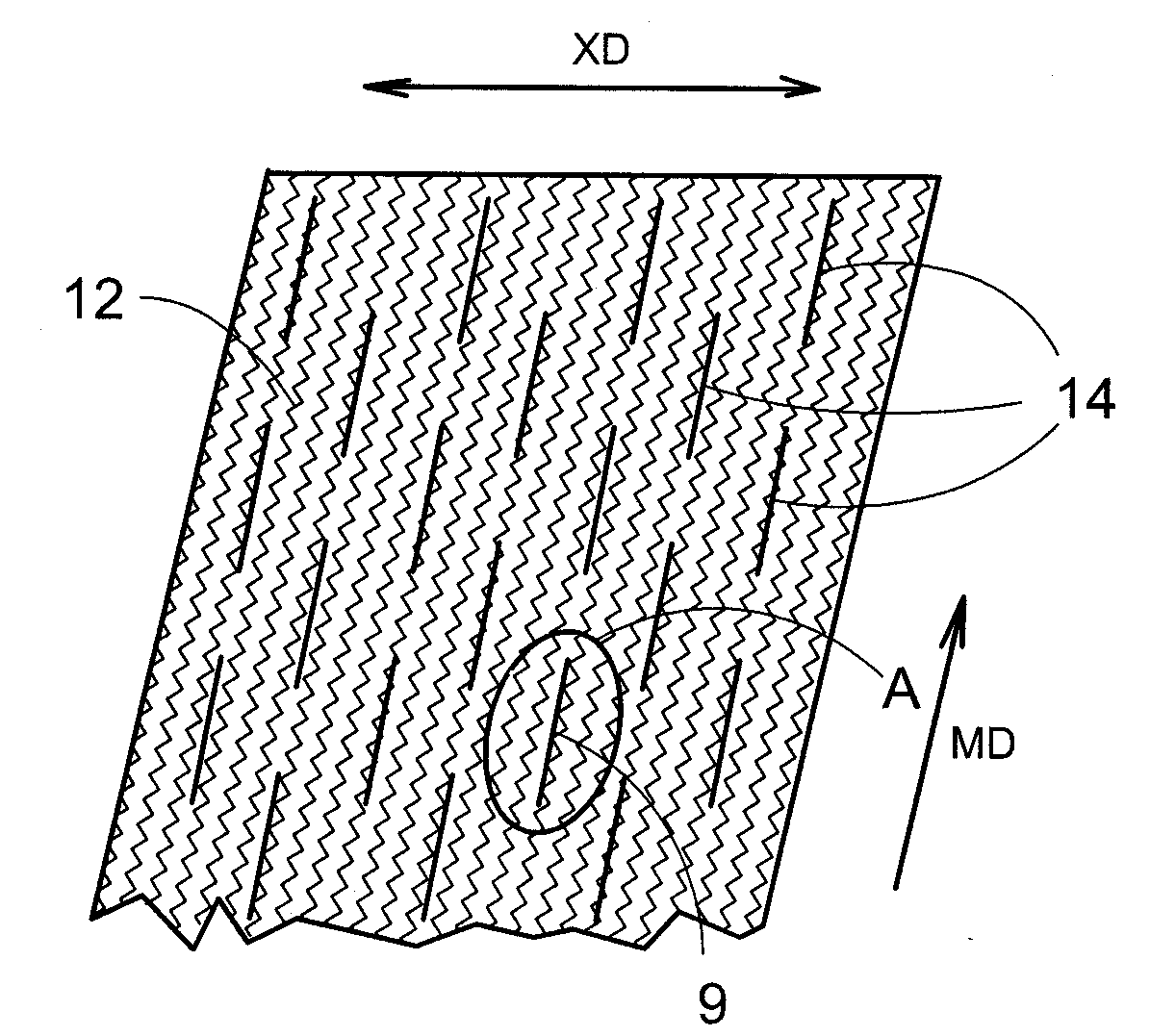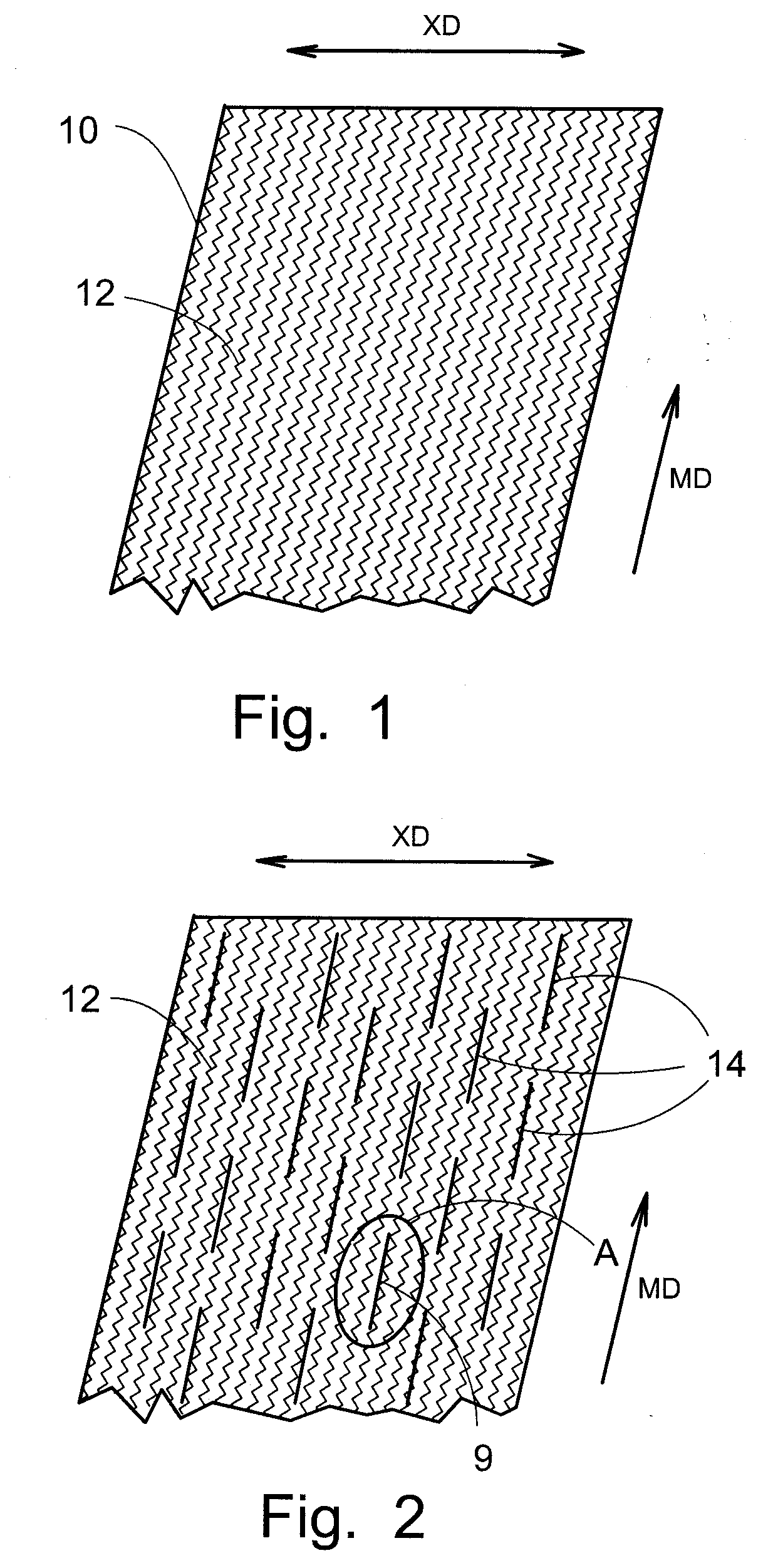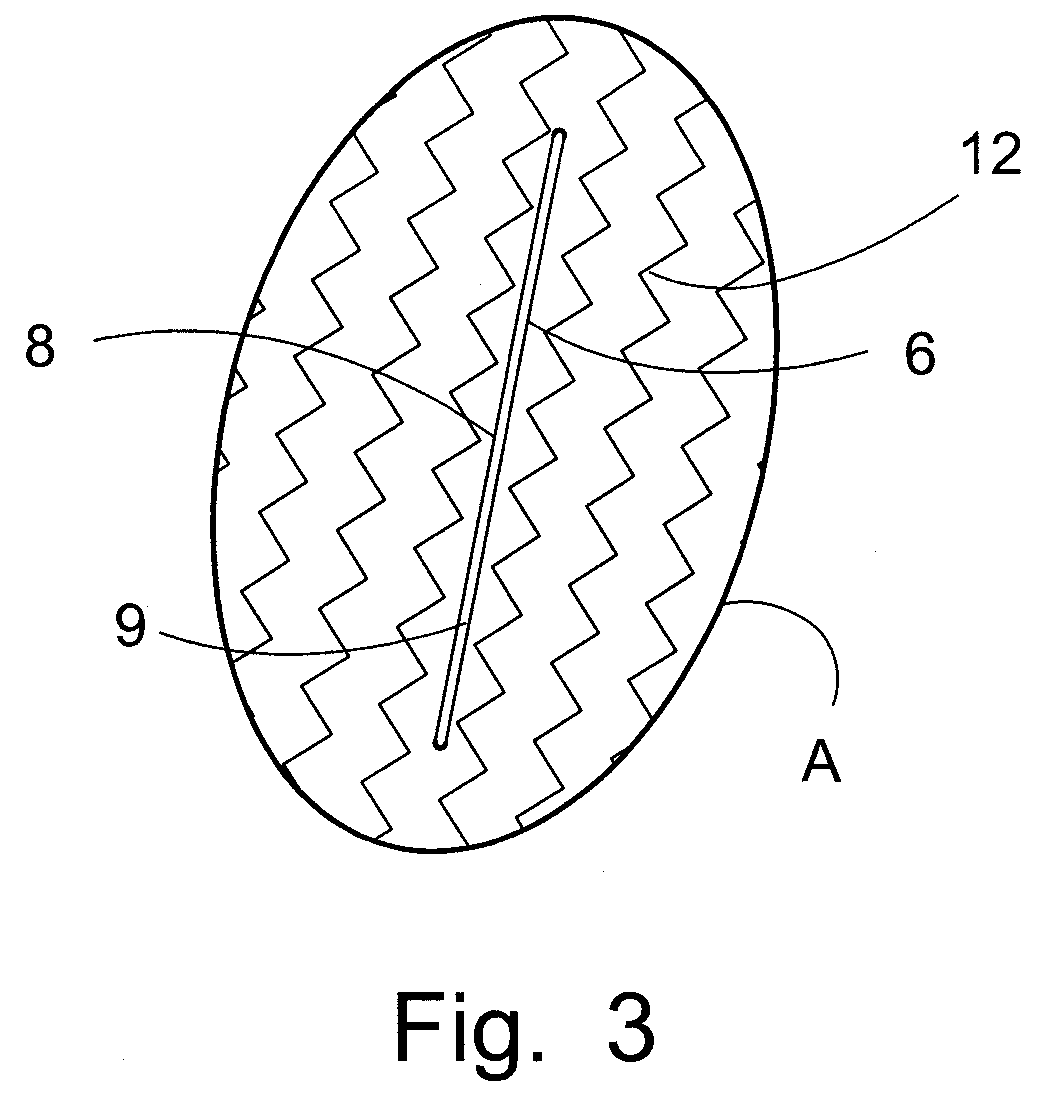Stitchbonded Fabric With a Slit Substrate
a technology of stitching fabric and substrate, which is applied in the field of stitching fabric, can solve the problems of reducing the aesthetic appeal of products, affecting the aesthetics of products, and reducing the stretch capacity of traditional stitching fabrics
- Summary
- Abstract
- Description
- Claims
- Application Information
AI Technical Summary
Benefits of technology
Problems solved by technology
Method used
Image
Examples
Embodiment Construction
[0049]The term “stitchbonded” refers to the result of a multi-needle stitching operation performed on a substrate layer of a web of substrate material. According to this invention, the substrate material is a largely planar shaped, unitary material of undifferentiated composition and physical properties. That is, the substrate material is substantially a single piece construction, preferably of fibrous matter which has the same physical properties at all places over its whole area. The substrate layer is further formed by introducing a plurality of slits in the substrate material. The slits thus form a local discontinuity in the surface of the substrate layer. Importantly, the stitching yarns are stitched through the substrate layer while the slits are unparted, i.e., the opposite lips of the slits are substantially completely in close proximity to each other.
[0050]After stitchbonding is completed, the fabric can be stretched by application of external tensile forces. Such force app...
PUM
| Property | Measurement | Unit |
|---|---|---|
| elongation | aaaaa | aaaaa |
| angle | aaaaa | aaaaa |
| elongation | aaaaa | aaaaa |
Abstract
Description
Claims
Application Information
 Login to View More
Login to View More - R&D
- Intellectual Property
- Life Sciences
- Materials
- Tech Scout
- Unparalleled Data Quality
- Higher Quality Content
- 60% Fewer Hallucinations
Browse by: Latest US Patents, China's latest patents, Technical Efficacy Thesaurus, Application Domain, Technology Topic, Popular Technical Reports.
© 2025 PatSnap. All rights reserved.Legal|Privacy policy|Modern Slavery Act Transparency Statement|Sitemap|About US| Contact US: help@patsnap.com



